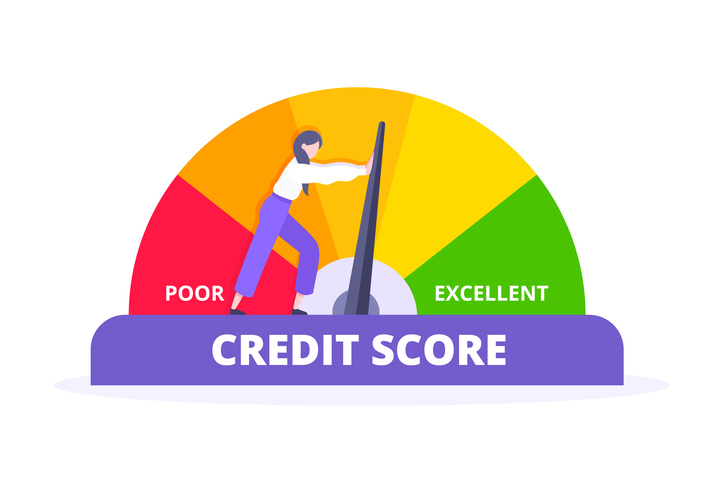Navigating the Roadblocks: Strategies for Consumers Facing Credit Access Inequality
As we move into the final months of the year, financial planning becomes even more critical. With holiday expenses on the horizon and the new year approaching, now is the time to assess and strengthen your financial footing. At Finance Monthly Magazine, we are committed to providing readers with the latest insights, practical ideas, and actionable tips to empower consumers in navigating complex financial landscapes. In this article, we dive into the pressing issue of credit access inequality and offer strategies that can help consumers overcome the barriers that may stand between them and essential financial opportunities. With our guidance, you’ll gain fresh tips and tried-and-true methods to improve your credit access, no matter the season or financial climate.
Understanding Your Credit Score and Building a Strong Profile
One of the most significant factors in loan approval is an individual’s credit score, which reflects their borrowing history and repayment behavior. A higher credit score typically results in lower interest rates and better loan terms, making it crucial for consumers to understand and actively manage their scores. Here are ways to strengthen your credit profile:
- Regularly Check Your Credit Report: Errors on credit reports are more common than many realize, and they can significantly impact your score. Checking your report from the three main credit bureaus (Experian, Equifax, and TransUnion) at least once a year helps identify and dispute any inaccuracies that may be harming your credit profile.
- Build a Positive Payment History: On-time payments make up the largest portion of a credit score. Prioritizing timely payments on all bills—not just loans and credit cards—can gradually improve your score. For those struggling to keep up with payment schedules, setting up automatic payments or reminders can be helpful.
- Limit New Credit Applications: Each time you apply for credit, it results in a “hard inquiry,” which can lower your score temporarily. Limiting new applications, particularly in a short period, can help maintain your score and show lenders that you’re not overly reliant on borrowing.
- Consider Using a Secured Credit Card: For those with limited or poor credit histories, a secured credit card can be a way to build credit. These cards require a security deposit, which acts as the card’s credit limit. By using the card responsibly and paying off the balance monthly, you can establish a positive credit history over time.
Exploring Alternative Credit Options
While traditional credit scoring methods dominate lending decisions, alternative options are emerging that provide more inclusive assessments, particularly for those with limited credit history or unconventional financial backgrounds. Here’s how to tap into these alternative options:
- Use Non-Traditional Credit Assessments: Some lenders now consider non-traditional data, such as rental payments, utility bills, and cell phone payments, to assess creditworthiness. If you have a consistent history of making these payments on time, look for lenders that use these data points, as they can improve your chances of loan approval.
- Look for Fintech and Peer-to-Peer Lending Platforms: The rise of fintech companies has brought innovative lending models that cater to a wider range of consumers. Peer-to-peer lending platforms, for instance, connect borrowers with individual lenders, often providing more flexible lending criteria than traditional banks. Exploring these options can offer more access to credit, sometimes with more favorable terms.
- Credit Builder Loans: Some credit unions and online lenders offer credit builder loans specifically designed to help consumers improve their credit scores. With a credit builder loan, the funds are held in a secured savings account until the loan is fully repaid. Payments are reported to credit bureaus, allowing consumers to build their credit while saving.
Seeking Financial Counseling and Support
Financial counseling services can provide valuable guidance for those navigating the complexities of credit and debt. Nonprofit organizations and community resources often offer free or low-cost counseling that can empower individuals to make better financial choices. Here’s what financial counseling can do:
- Develop a Budget and Payment Plan: Financial counselors can help you assess your income, expenses, and debt obligations to create a manageable budget. They can also assist in setting up a debt repayment plan, prioritizing high-interest debts, and finding ways to save on interest.
- Understanding Your Rights and Options: Financial counselors are knowledgeable about consumer rights in the lending space. They can educate you on laws that protect against unfair lending practices, help you understand your loan terms, and offer guidance on managing debt if you're struggling with repayments.
- Debt Management Programs: Some counseling agencies offer debt management programs, which negotiate with creditors to lower interest rates and consolidate debts into a single monthly payment. These programs can simplify debt repayment and help avoid defaulting on loans, which would negatively impact credit scores.
Utilizing Community-Based Financial Resources
For consumers in rural or underserved urban areas, access to credit may be limited due to fewer financial institutions. However, community-based financial organizations, such as credit unions or nonprofit lenders, can offer more accessible loan options with fair terms.
- Join a Credit Union: Credit unions are member-owned financial institutions that often offer lower fees, better interest rates, and more personalized service compared to traditional banks. Many credit unions are committed to serving their communities and may offer loan products tailored for individuals with limited or damaged credit.
- Explore Community Development Financial Institutions (CDFIs): CDFIs are nonprofit institutions focused on providing credit and financial services in underserved areas. These institutions may offer small-dollar loans, microloans, and even credit-builder loans, specifically designed to support individuals working to improve their financial standing. CDFIs often work with local resources to offer financial education programs, which can help individuals improve their credit and manage debt.
- Seek Out Local Assistance Programs: Some local governments and nonprofits provide short-term financial assistance or low-interest loans for specific needs, such as education, home repairs, or starting a small business. Researching available programs in your area can provide options that may not be available through traditional lenders.
Leveraging Financial Education Resources
A lack of understanding about credit and borrowing can hinder financial progress. Financial education empowers consumers to make informed decisions, understand their rights, and work towards long-term financial goals. Many resources are available for those seeking to improve their financial literacy:
- Online Courses and Workshops: Numerous websites offer free or low-cost courses on credit management, budgeting, and debt reduction. Many libraries, nonprofits, and community centers also host workshops that cover these topics in accessible, practical terms.
- Use Educational Tools from Financial Institutions: Some banks and credit unions offer educational tools, such as simulators and calculators, to help customers understand the impact of loans and credit card interest. These tools can be valuable in visualizing how payments affect balances over time and can help in making borrowing decisions.
- Personal Finance Apps: Several apps are designed to help consumers track their spending, manage debts, and even improve their credit scores. Some apps also provide tailored advice and notifications that encourage responsible financial habits, helping users stay on top of their credit-building journey.
Final Thoughts: Charting a Path to Better Credit Access
Credit access inequality is a challenge, but there are ways for consumers to overcome barriers and build a more secure financial future. By proactively managing credit scores, exploring alternative lending options, seeking financial counseling, leveraging community resources, and embracing financial education, consumers can empower themselves to make informed financial decisions.
For those navigating credit roadblocks, it’s important to remember that improving creditworthiness is often a gradual process. Small, consistent efforts—like making on-time payments, building a positive credit history, and utilizing available resources—can pave the way to better credit access and a more stable financial future.










